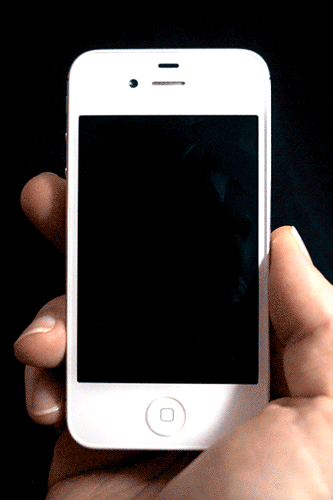3. Everything New is Old Again
The medium is the message, right? In McLuhan's thought, media have certain agentic qualities that I'd like to relate to the preceding two blog posts.
I have a few propositions. First, the digital era is a subset of the alphabetical era. This comes from my limited understanding of McLuhan. Second and subsequently, digital networks are a subset of ontological networks. This comes from Harman. Third, networked ontologies--in the sense of Harman's OOO--express their depth through their inexhaustibility. Inexhaustible ontologies imply that technical collaborations are not unique to digital "collaborators," as Sterling proposes.
Let me explain.
 The California job case, above, resembles the typecases used by early printers like Aldus or de Worde. These printers represented knowledge in a significantly different way than what had come before in European society--disconnected from either a time or an acoustic space (as in the bardic transmission of information), or a particular, identifiable scribal hand (as in the secretarial transmission of information)--and our contemporary digital technologies amplify print modes of signification--again, across time and space, and distinct from personal allographs (the same differences, as it were).The digital turn promotes the digits 0 and 1 to represent the rest of the case, provided sufficient encoding. That encoding provides the illusion of Sterling's "virtual buddies," but only because machines can "read" certain kinds of alphabets and digits. Yet I contend that this is a narrow view of both reading and human-machine interaction. "Translation" is Bruno Latour's term for any interaction between actants, which Whitehead might otherwise call "prehension."
The California job case, above, resembles the typecases used by early printers like Aldus or de Worde. These printers represented knowledge in a significantly different way than what had come before in European society--disconnected from either a time or an acoustic space (as in the bardic transmission of information), or a particular, identifiable scribal hand (as in the secretarial transmission of information)--and our contemporary digital technologies amplify print modes of signification--again, across time and space, and distinct from personal allographs (the same differences, as it were).The digital turn promotes the digits 0 and 1 to represent the rest of the case, provided sufficient encoding. That encoding provides the illusion of Sterling's "virtual buddies," but only because machines can "read" certain kinds of alphabets and digits. Yet I contend that this is a narrow view of both reading and human-machine interaction. "Translation" is Bruno Latour's term for any interaction between actants, which Whitehead might otherwise call "prehension."Digital networks, touch-sensitive screens, internetworked computer systems--these strike contemporary first-worlders as technologies apart and above technologies like the printing press, yet none of these are infused with any magical, vital phlebotinum. Computers operate in meatspace, even though humans can't normally sense the electronic exchanges that occur in microprocessors. Microprocessors made of processed metals and plastics that come from conflict-ravaged resource-rich countries. Your iPhone connects you to Foxconn as materially as fox.com.
Both digital texts and print texts are, after all, inexhaustible. Humans can perceive them in a handful of ways (digital texts can be perceived in a few more, since they might interfere with the relay of interior sensory information: eg, a pacemaker interacts with pulmonary stretch receptors through electronic pulses), but we can also discover our own ignorance through the progress of technology. Radiography, for example, revealed elements of printed texts only visible as high-frequency light or magnetic topology--translated by our technologies into lower-energy light for ocular input. These modes of perception display interactions between texts and other objects not designed for functional purposes. If we impute agency to things whose interactions exceed our designs, and if we discover that the material print--just like Sterling's virtual buddies--exceeds our designed interactions, then we ought impute agency to the material print. Just as the depth, alienation, and inexhaustibility of digital texts led Bruce Sterling to treat them as "collaborators," so too can print technologies be understood as such.
What's the pay-off for this high-fallutin' argument that can be mis-read to say that books are people? First and most flippantly, this provides us a presentist sympathy to the early moderns who discussed printed books as people with souls, voices, etc. They were not cavemen, unprepared for their own technological creations. Second and more seriously, the theories discussed provide us a consistent materialist account of the interrelation between political or economic history and literary history, via bibliography. Third and most seriously, these posts suggest that we treat persons in the circuit of early modern book production and survival not only as collaborators with other humans, but also with materials. The archivalist cuts deals with paper: if the archivalist provides suitable climates, the paper will slow its acidification. Paper shows its agency in its depth of material interactions, namely, its oxidization in certain climates. Likewise, the printer collaborates with his greasy surfaces. A bad batch of paper can ruin an edition, and that paper can show its agency with high or low pliability, or overly smooth felting, or several other characteristics that only illustrate the inexhaustibilty of paper's being.
To copy-change Sterling,
The real issue now is this intimate participation of machinery in cultural production. Practically everything we did in the early modern era that was novel, and different, and challenging, had some kind of material flavor.Forms of creative practice have arisen that are co-discovery with matter. They’re brain-bibliography mashups and hybrids.





